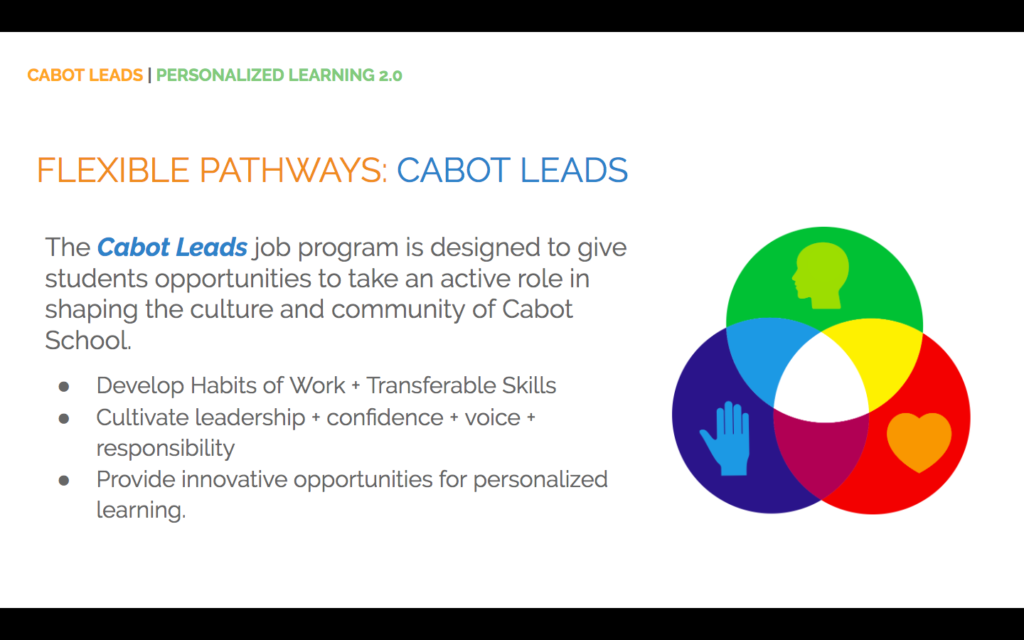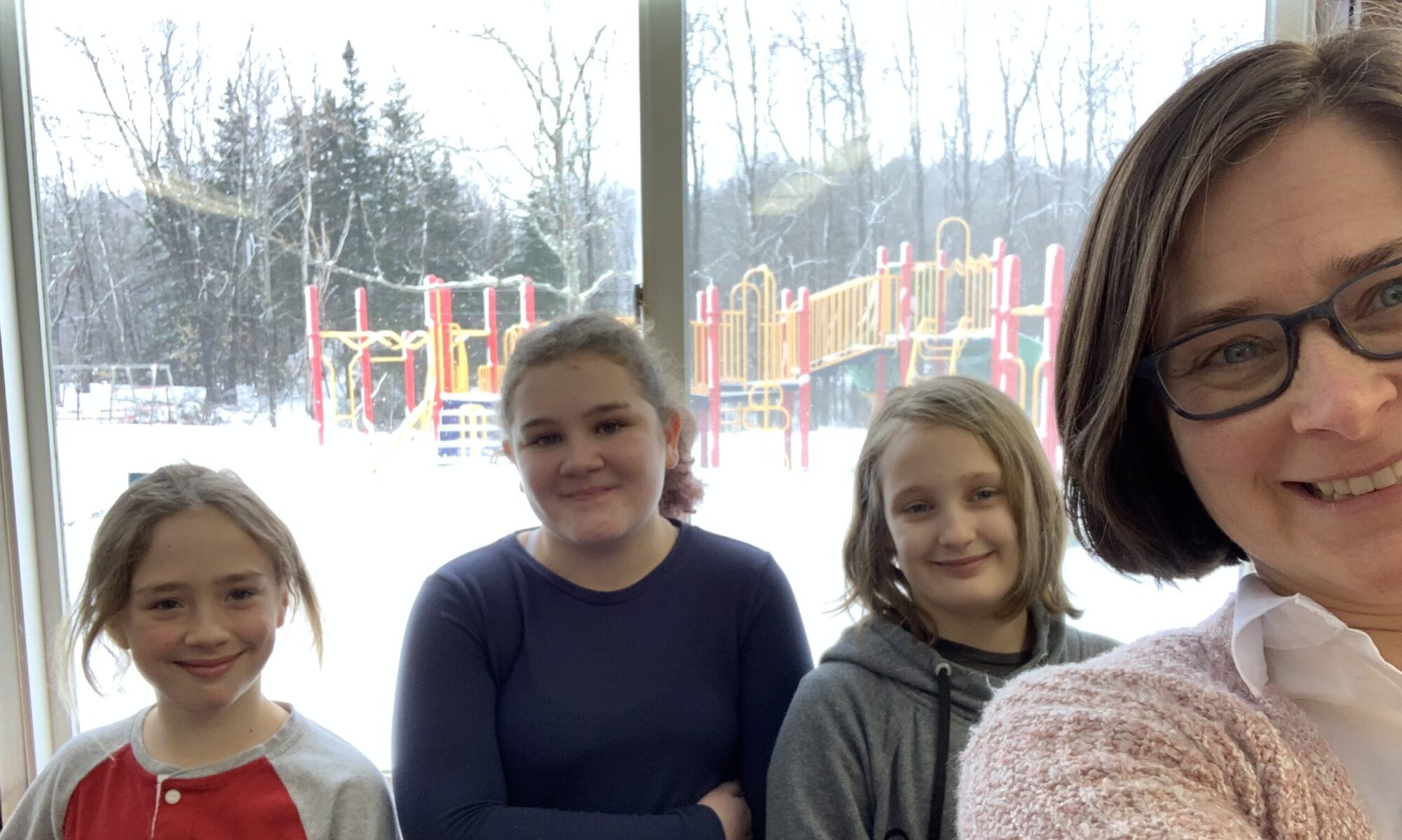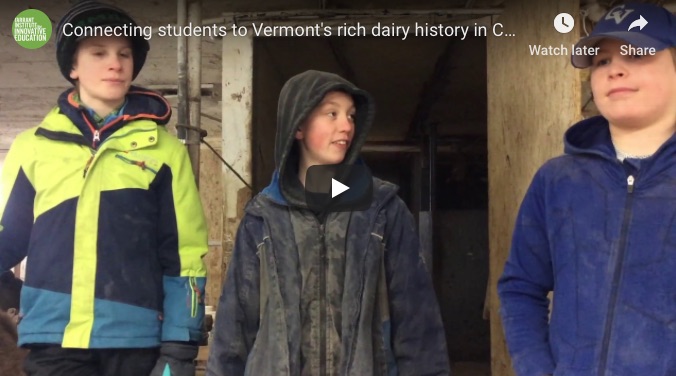There’s more math, biology, and chemistry than you’d think.

It’s a wintry morning in one of the coldest Februarys in recent memory, with the temperature hovering around five degrees Fahrenheit. A cobalt-blue hatchback slowly navigates icy slush on a dirt road, heading toward two silver grain silos. The rutted road winds between deep snow berms, and the small car is packed with local students. At the wheel? The school librarian.
Tiny West Danville, Vermont barely registers on a map. A long gray two-lane highway bisects a landscape of rolling green hills, dotted at intervals with tiny shapes that, if you squint, look a whole lot like cows. Down a dirt road leading off the highway sits one of the state’s oldest dairy producers, Molly Brook Farm. It’s a small organic operation that has a big impact on middle school students from the Cabot School, 10 minutes away. Twice a month, students self-select to go out to Molly Brook and help out with the cows. But who’s helping who? While students get to shoveling, Molly Brook dairy farmers Myles and Rhonda Goodrich have their own lessons to impart.
There’s a lot of learning in the dairy business, and students say even the shoveling keeps them engaged.
Founded in 1835, Molly Brook Farm produces organic milk for a local dairy cooperative, as well as selling Jersey cows famed for their superior genetics. And all of that takes a lot of work.
Down the hill at The Cabot School, the middle grades have been building a service learning project called Cabot Leads. Students apply for any number of jobs in and around the school or community, based on the needs of the school community and their own interests. Jobs like gardener, assistant chef, school photographer, library advisor, or grant writer. And now, cowhand. Students began their work at Molly Brook by each choosing a calf. They’ll follow the calf’s progress as it grows, checking in on it with each visit. At each visit, they work and learn at the same time.

Among the many lessons students learn at Molly Brook:
- calculations for converting feed to cows (math)
- temperature considerations for successful storage of bull semen (biology)
- tracking genetics between cow and calf (genetics)
- the role of calcium intake in post-partum cow care (chemistry)
- administration of vital nutrients in emergent cow care (anatomy)
- cleaning calf pens & filling sawdust bunks (life)
- safe handling of liquid nitrogen (lab science)
- potential impact of differential calf evaluation to profit margin (economics)
- barn design for cow satisfaction and efficiency (math, environmental science)
Did we mention the shoveling?
On one of their February visits, students’ first stop was to check on their pet project calves, ensuring each was eating well and gaining weight. They also posed for updated photos with each calf.
Next stop: a cow who had recently calved. Myles Goodrich explained the symptoms the cow had shown — lethargy, lack of appetite, weakness — then demonstrated how to mix a calcium solution and administer it intravenously.
After that, students visited the main barn, where cows milled around munching on winter hay. Where there’s hay, there’s… post-processed hay… so students got to shoveling. The barn features an opaque roof, designed to maximize the amount of light entering the main area, and students had learned the science behind it in detail on a previous visit.
After shoveling came a brief snack break. Rhonda Goodrich took the opportunity to use that downtime to share the recent results of a visit from the dairy inspector. He’d previously graded some of the cows to a certain standard, but recent marks differed, and Rhonda went over the percentages involved, including the potential economic impact of the change. Students munched crackers and cookies, and sipped hot cocoa, hanging on Rhonda’s every word.
One student, Denver, lives on his family’s dairy farm, and was particularly interested in how Molly Brook’s techniques are different. The two farms contribute milk to different dairy co-ops as well, and Denver can talk at length about the differences that entail. Especially for economics. “Conventional doesn’t pay as much as organic,” he began, “two years ago, in the fall, instead of going down a dollar per hundred pounds, we went down ten, twenty. But then we raised our cow percentage.”
The students’ only complaint?
They wish they could go out to Molly Brook Farm more often.
How could you connect your students with local businesses, organizations, or industries?



5 Replies to “Connecting Vermont students with dairy farms”
Comments are closed.